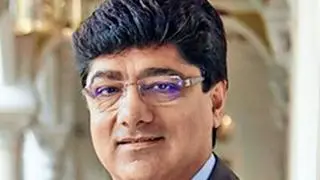For a company that was born more than a century back and which basically wrote the rules of electricity game, GE today has placed its bets firmly on technology to drive its future growth.
Russell Stokes, Senior Vice-President and CEO, GE’s Energy Connections, a $11-billion electrification business (after the acquisition of Alstom), who reports to Chairman Jeff Immelt, spoke to BusinessLine on the States lagging behind the Centre in terms of investments in power. He also explained GE’s ‘store’ initiative. Excerpts:
What is Energy Connections’ positioning in the GE matrix?
Energy Connections has four segments — Digital Energy, Industrial Solutions, Power Conversion and Intelligent Platforms.
In all the segments, technology is one common element that powers all. Energy Connections uses millions of connected assets and their insights to support mission-critical, real-time control systems for pipeline management, real-time energy market platforms, gas distribution systems and electrical transmission and distribution grids.
This is in line with the vision of the ‘Industrial Internet’ that will drive a lot of business for us and the ecosystem.
That’s how our Predix solution has come into existence.
The way we work is we frequently pool resources and deep domain expertise, while also tapping the strengths of other businesses across the total (GE) enterprise.
Does GE plan to bring more solutions in the energy segment to India?
Electrification is one of the most important things to be done in India. Apart from bringing solutions in switchgear, motors, generators we are also bringing in digital energy technologies.
In India, hasn’t power capacity addition been an issue? Have the investments in sub-transmission and distribution grids at the State-level kept pace?
Today, India has 290 GW of installed capacity. Additionally, there are a lot of stalled assets. In the T&D grid, you have constraints which lead to congestion in some pockets. So, you cannot move energy from the generation to distribution point. The 29 States have not moved at the same speed and that is due to insufficient investments. However, the power scene at the national level is adequate. The States are behind four-five years.
The Modi government is aware of it. There are issues of environment, coal linkages and so on, and the government is factoring all those things in. Also, there are banks which are under stress (due to loans given out to Discoms). If the energy sector does not grow, India’s GDP numbers will not hit 9 per cent.
So, do you see the government taking sufficient steps to resolve this? How challenging is it to do business in India?
Every country has its set of challenges — whether it is the US or Middle East. We understand that it cannot be solved in one day. But the government’s focus… and under the direction of PM Narendra Modi, this will be addressed. However, India has to move fast.
GE talks a lot about its store initiative. How does this work?
For us, the GE store is a sharing exchange platform where we were able to bring local experts from different parts of the company across functions as varied as finance, legal, operations, and commercial to execute a project. The company has invested a billion dollars and in people to build the industrial Internet platform (called Predix) that we can scale and leverage across multiple industries. So, information that a department has with respect to the locomotive industry can be leveraged in another industry like aviation. The idea is to leverage a single resource pool — whether server computers or knowledge. I am also a product of the GE store as after aviation and transportation, I am into energy.
How is the integration with Alstom shaping up in India?
The integration is going well. In India, we have 4,500 people. As a combined entity, instead of selling grid as one piece of solution, we are looking to offer a more complete solution as we have expertise across the energy value chain. As India develops industrially, we should be able to deliver more, which we have demonstrated for a century or more in the country.
How is your India order book?
We have an order book of $2.1 billion.








Comments
Comments have to be in English, and in full sentences. They cannot be abusive or personal. Please abide by our community guidelines for posting your comments.
We have migrated to a new commenting platform. If you are already a registered user of TheHindu Businessline and logged in, you may continue to engage with our articles. If you do not have an account please register and login to post comments. Users can access their older comments by logging into their accounts on Vuukle.